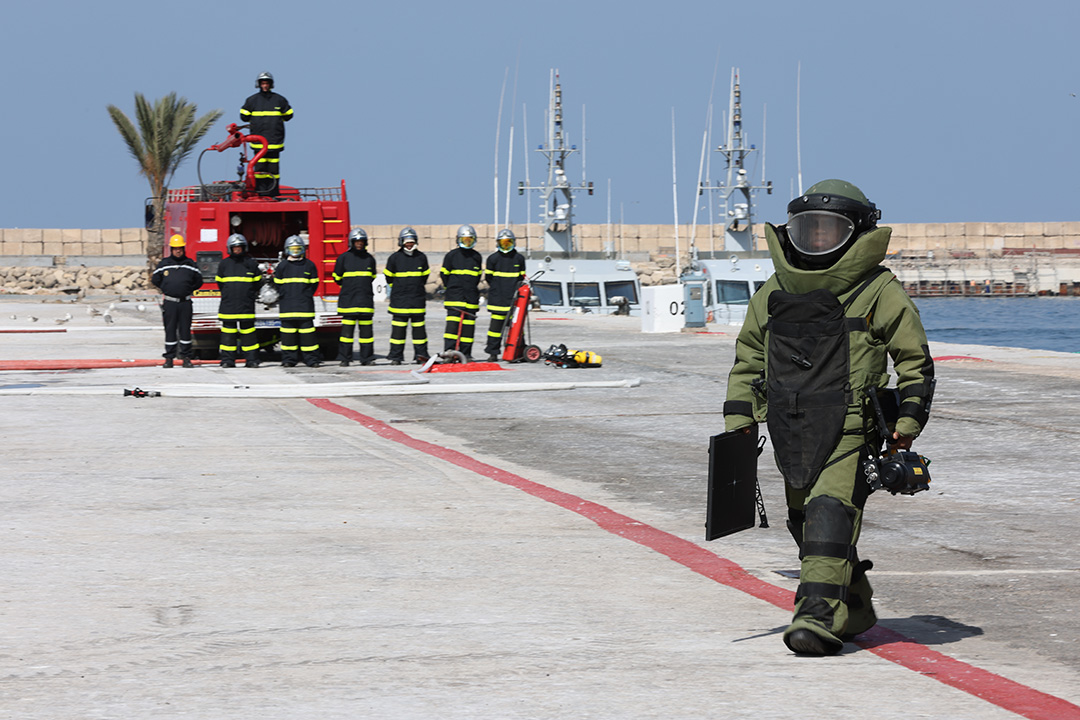 High above Morocco’s Kenitra Air Base, Moroccan and United States military medical teams tended to a wounded Soldier on a Moroccan C-130H Hercules transport aircraft. The teams had evacuated the Soldier and worked to stabilize him before transferring him to a hospital.
High above Morocco’s Kenitra Air Base, Moroccan and United States military medical teams tended to a wounded Soldier on a Moroccan C-130H Hercules transport aircraft. The teams had evacuated the Soldier and worked to stabilize him before transferring him to a hospital.
Over Marrakesh, a U.S. Air Force KC-135R Stratotanker streaked across the sky alongside a Royal Moroccan Air Force F-16 fighter jet. In a complex maneuver, the Moroccan jet flew precisely underneath the Stratotanker and performed an air-to-air “dry contact” refueling pass.
These events unfolded during African Lion 2025 (AL25), the continent’s largest annual joint military exercise.
U.S. Army Southern European Task Force, Africa, led the exercise on behalf of United States Africa Command (AFRICOM). Other AL25 events were conducted across Ghana, Morocco and Senegal from April 14 to May 23.
AL25 involved more than 50 nations and about 10,000 troops. Other participating African nations were Benin, Cabo Verde, Cameroon, Côte d’Ivoire, Djibouti, Egypt, the Gambia, Guinea-Bissau, Kenya, Liberia, Libya, Mauritania, Nigeria, Sierra Leone and Togo. The exercise emphasized the importance of building strong relationships and enhancing the ability of different militaries to work together.
“Globally, African Lion 2025 aims to strengthen security cooperation between the United States and its African partners to build a more proactive posture against transnational threats,” Senegalese Col. Massamba Thiam, chief of operations for the Senegalese Army and senior Senegalese representative for the exercise, said in a news release. “For Senegal, this is an opportunity to unite efforts from neighboring countries, strengthen subregional security cooperation and reinforce complementary capabilities.”
AL25 focused on cyber defense, marksmanship, airborne and amphibious operations, field training, tactical combat casualty care, command post operations, medical readiness, special operations, transport capabilities, advanced space and electronic warfare, and the use of high mobility artillery rocket systems, which use aircraft for long-range precision strikes.
There were also air-to-air refueling operations, interoperability drills, combined patrols, desert survival training, situational response exercises, training on countering improvised explosive devices, and humanitarian assistance.
In Morocco, dental providers with the FAR worked with U.S. military personnel at a field hospital in the rural town of Anzi, where they shared clinical techniques and offered dental care to locals. In rural Moroccan regions, people often live hours from a medical facility.
At the field hospital in Anzi, 271 health care professionals provided free medical care to locals. Built by Moroccan and U.S. troops, the hospital includes medical and surgical units, an expandable 20-bed hospitalization unit and social assistance units, as well as a sterilization unit, a digital medical imaging center, a laboratory for analyses, and a military pharmacy.
Events in Ghana focused on military decision-making processes, joint planning processes, and intelligence surveillance and reconnaissance. Ghana Armed Forces Col. Frank Gyabi-Abrokwah stressed the importance of continuous training, particularly amid ongoing terror threats spreading southward and westward from the Sahel region.
“The threat [from] the Sahel region is imminent, realistic and dangerous hence the need for partnerships to continue to enhance training activities in readiness to secure the Northern frontiers of the country,” Gyabi-Abrokwah said in a report by the Ghana News Agency.
The exercise also was beneficial to the U.S. military and other participating nations.
“I can tell you firsthand, partnerships matter,” U.S. Army Maj. Daniel Dreyer, an operations officer assigned to the 173rd Airborne Brigade, said in a news release. “Working with our Moroccan, Tunisian and Senegalese partners isn’t just about shaking hands. It’s about learning how each other fights, thinks and adapts — so when real-world missions come, we’re already speaking the same language.”

